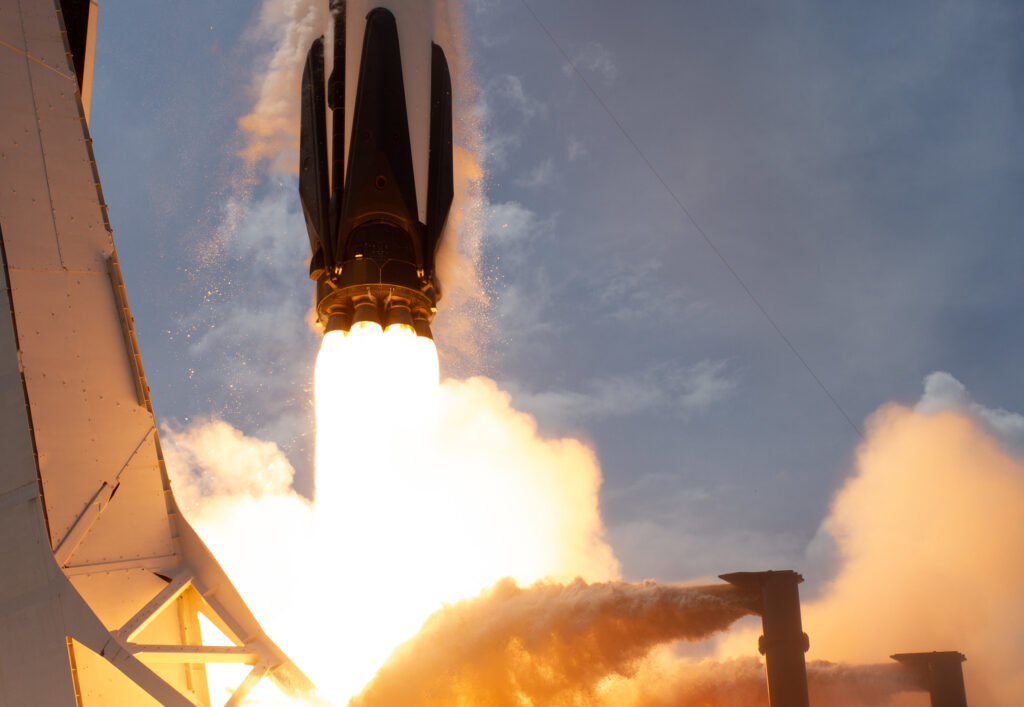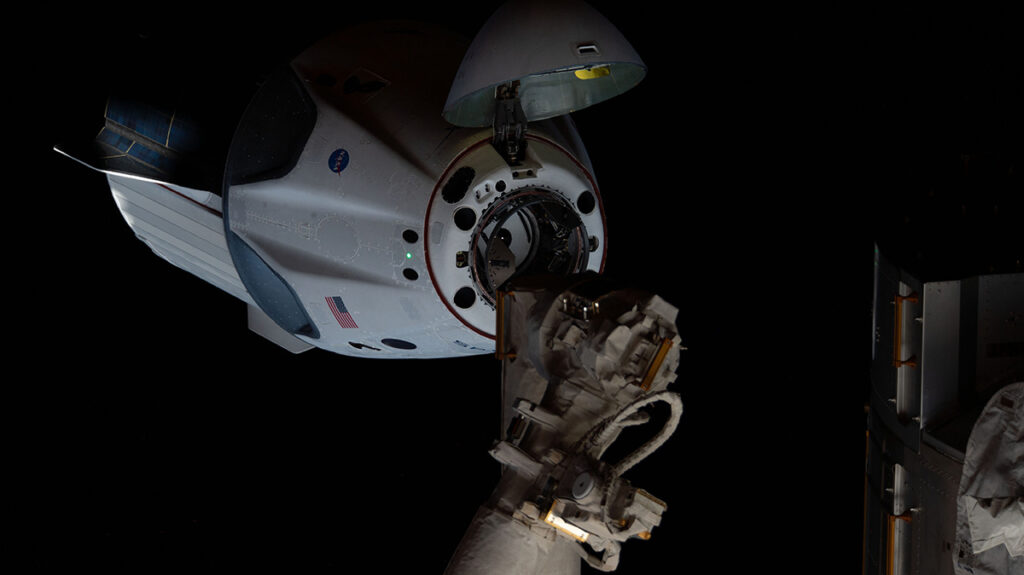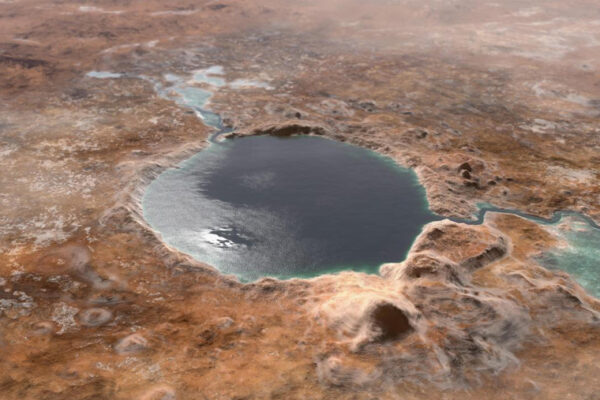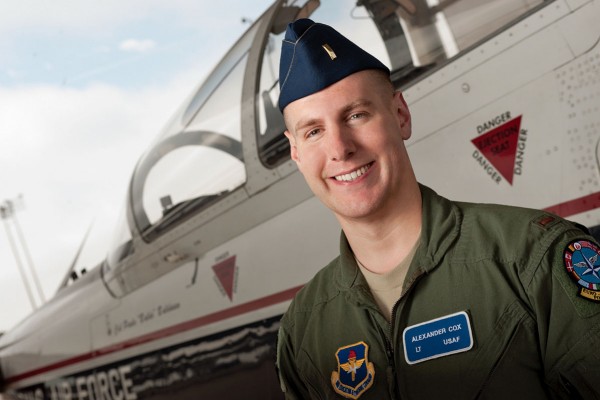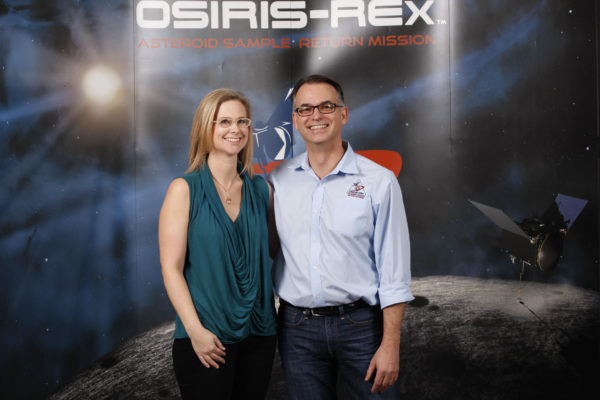“What do ballplayers, rock stars and presidents want to be when they grow up?”
Col. Robert “Bob” Behnken, BSME ’92 (mechanical engineering), BSPhy ’92 (physics), wears a serious expression on his face when he rhetorically asks the question during an interview about his education at Washington University in St. Louis.
The uniform he wears pretty much gives the answer away, but it’s the quick smile he flashes that lets you know he means it.
“Astronaut.”
At 3:22 p.m. EST on Saturday, May 30, Behnken and fellow astronaut Col. Doug Hurley became the first astronauts to head to space from U.S. soil since 2011, when NASA’s Space Shuttle program ended. And they were the first in NASA’s history to launch from a commercially built and operated spacecraft: the SpaceX Crew Dragon.
“Launch Day. In America. Again,” Behnken tweeted just after 8:45 a.m. Saturday.
The importance of bringing launches back to America is something the St. Ann, Missouri, native has been vocal about. “After having grown up with the shuttle program — seeing the launches and the crowds on the Florida coast — and being a child inspired by NASA’s plans for future exploration, I think it’s important for the U.S. to continue to have these exciting missions out there,” Behnken said in an interview prior to the launch.
“It motivated me to go into this sort of career, and I know that it motivates other children.”
He knows because he talks to them. From elementary school kids to college students, Behnken seems as comfortable in front of a classroom as in the cockpit of a space-bound vessel, which, to be clear, for him is very comfortable.
“Every time he comes back, he gives a talk,” says Philip Bayly, the Lilyan & E. Lisle Hughes Professor of Mechanical Engineering and chair of the Department of Mechanical Engineering & Material Sciences at the McKelvey School of Engineering. “[Bob] speaks to students and to alumni. He is very popular as a speaker and a guest.
“He’s such a personable guy,” Bayly says, “and a great story.”
He wasn’t too bad as a student, either. Behnken was an Air Force ROTC scholar and, in 1992, he was the university’s Outstanding Mechanical Engineering Senior. His double major in mechanical engineering and physics (at the time, the engineering school awarded the physics degree) prepared him for a hands-on future working with some of the most powerful machines on the planet.
He learned about some of the most fragile, too.
About 30 years ago, Behnken took a course focused on the physics of cardiovascular physiology with James G. Miller, the Albert Gordon Hill Professor of Physics Emeritus. The lectures and discussions covered the effects on the heart of accelerating significantly faster than gravity, including blackouts and redouts (when strong acceleration forces blood to pool in the head).
“However,” Miller says, “at the time, neither Bob Behnken nor I could have anticipated the substantial cardiovascular effects associated with long duration shuttle flights in zero-g.” (A 2007 NASA study on board the International Space Station — called the Cardiovascular and Cerebrovascular Control on Return from ISS — examined how long-duration exposure to microgravity affected crew members, specifically their heart functions, blood pressure and blood vessels that supply the brain.)
Accepting those kinds of unknowns is a hallmark of Behnken’s career. Soon after college, he would get a small taste of those high gs he learned about in Miller’s class.
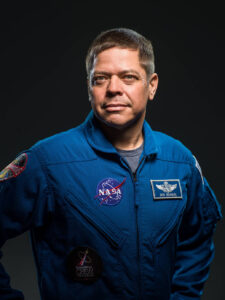
After earning a master’s degree and doctorate in mechanical engineering from the California Institute of Technology, Behnken went on to the Air Force where he worked as a test pilot. He was the lead test engineer for the fourth-generation F-22, a jet that can subject its pilot to almost 10 times the acceleration of gravity.
“I thought that flying was better than sitting behind an engineer’s desk,” he said in an earlier interview in this magazine.
In 2000, Behnken was selected by NASA into its astronaut candidate training program. He flew on two Space Shuttle missions, STS-123 Endeavour in 2008 and STS-130 Endeavor in 2010. After racking up more than 700 hours in space, including 37 hours on space walks, he served as NASA’s chief astronaut from July 2012 to July 2015.
Once again, Behnken finds himself as a test pilot; officially, he is the joint operations mission commander for NASA’s SpaceX Demo-2 mission. Even though he’s now working with SpaceX, he says his Air Force experience continues to serve him well.
In the Air Force, he says, he was balancing managing risk while collecting data, “in a calm, cool test environment with experienced folks.” Although this mission is, as he says, “a little more complicated with a lot less resources,” his role remains the same.
He and Hurley are conducting multiple tests to ensure SpaceX’s systems are safe and efficient for future human space travel. The initial launch date, May 27, had to be scrubbed — postponed due to weather conditions. (WashU alumnus Brian Cizek, AB ’15, also participated in the historic launch serving as a launch weather officer for the U.S. Air Force.) Despite the hours of preparation and goodbyes to family, Behnken took it in stride, pointing out on Twitter that it was still a first:
Wednesday’s scrub accomplished something new, fueling and de-fueling of a @SpaceX Falcon9 w/humans onboard. Fitting that our test flight checked that off the list of firsts before Crew1 (@Astro_illini, @VicGlover, @Astro_Soichi, and Shannon Walker) climb into their vehicle!
Saturday afternoon brought another round of goodbyes and final preparations.
At the top of the 127-foot Falcon launcher sat Crew Dragon. Inside, seated about halfway up the 27-foot Crew Dragon were Behnken and Hurley — or Bob and Doug, as they are called. This time, the weather cooperated, and the two launched successfully and headed out on a 19-hour voyage to the International Space Station (ISS).
On the ground, the astronauts’ families — both Behnken and Hurley are married to astronauts — took part in a ritual few family members ever will: watching their loved ones shoot into space. Nerve-racking? Maybe. But it was a moment Behnken says he has been waiting for.
“On a deeply personal level, I’m really excited that my son is going to get a chance to get to see me launch into space.” Until the launch, Behnken says, being an astronaut had been “a bit of an abstraction” for his son, who was born after Behnken’s final Shuttle mission.
Nearly 19 hours after launch, Sunday. May 31 at 10:16 a.m. EST, Crew Dragon docked, automatically, with the ISS. Behnken and Hurley floated aboard and were welcomed with hugs, a gesture still safe in space if not back here on Earth. The two joined NASA Commander Chris Cassidy, who has been on orbit since April 9, and Roscosmos cosmonauts, Anatoly Ivanishin and Ivan Vagner.
The Demo-2 mission is somewhat open-ended. This test-ready Crew Dragon can stay in orbit for about 110 days, but the mission duration is yet to be determined. Such unknowns are unusual for a space mission.
But not for Behnken.
“He embraces risk and adventure,” Bayly says. “I think if there weren’t any, he’d be bored.”
“Bob Behnken is the kind of alum that every engineering dean loves to describe when trying to engage students,” says Aaron Bobick, dean of the McKelvey School of Engineering and the James M. McKelvey Professor. “He combined science and engineering in both his undergraduate and graduate studies, went on to achieve great success in a field that captures the imagination, and has used that success to inspire others to pursue their dreams.”
